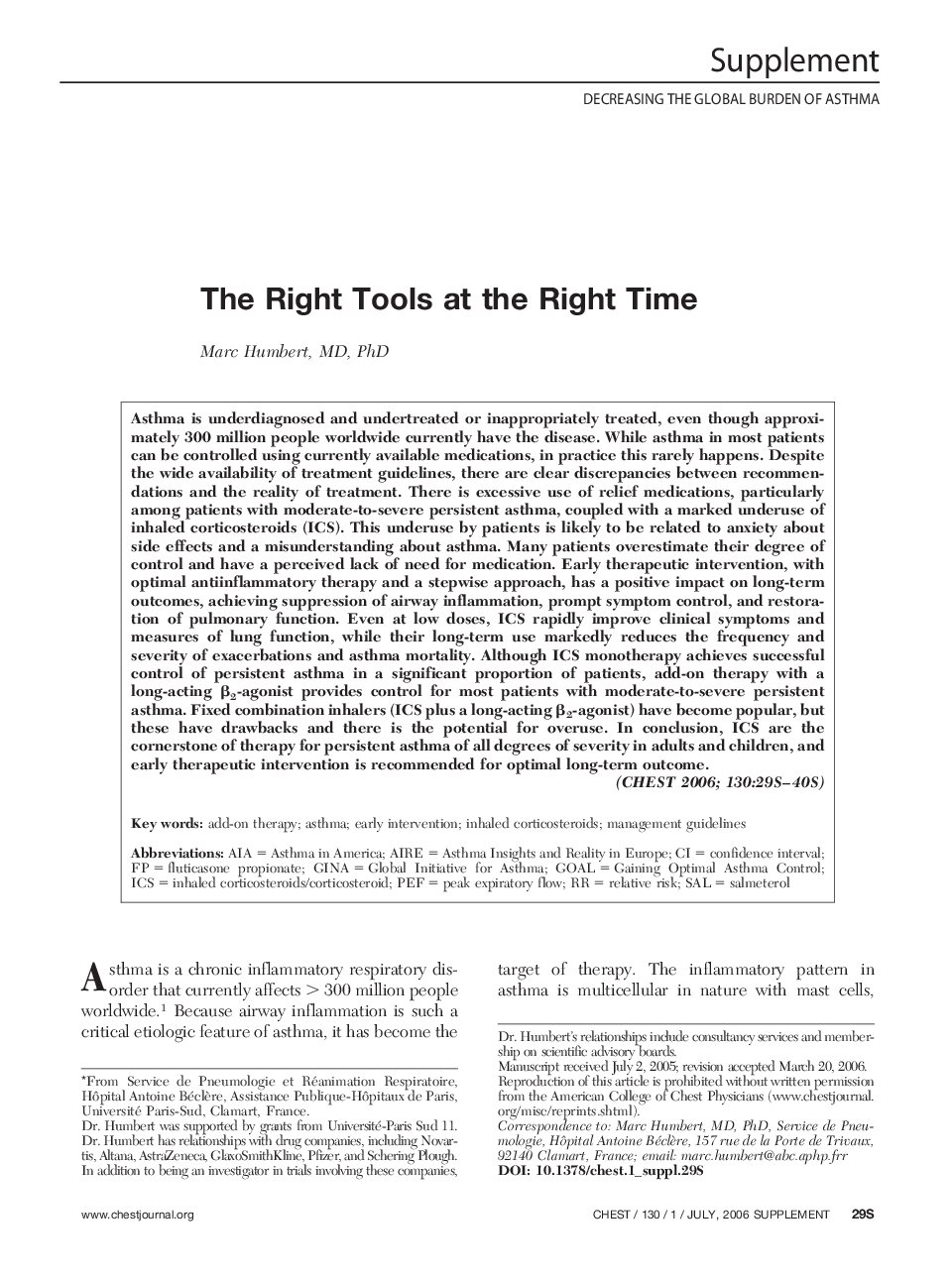| Article ID | Journal | Published Year | Pages | File Type |
|---|---|---|---|---|
| 2905435 | Chest | 2006 | 12 Pages |
Asthma is underdiagnosed and undertreated or inappropriately treated, even though approximately 300 million people worldwide currently have the disease. While asthma in most patients can be controlled using currently available medications, in practice this rarely happens. Despite the wide availability of treatment guidelines, there are clear discrepancies between recommendations and the reality of treatment. There is excessive use of relief medications, particularly among patients with moderate-to-severe persistent asthma, coupled with a marked underuse of inhaled corticosteroids (ICS). This underuse by patients is likely to be related to anxiety about side effects and a misunderstanding about asthma. Many patients overestimate their degree of control and have a perceived lack of need for medication. Early therapeutic intervention, with optimal antiinflammatory therapy and a stepwise approach, has a positive impact on long-term outcomes, achieving suppression of airway inflammation, prompt symptom control, and restoration of pulmonary function. Even at low doses, ICS rapidly improve clinical symptoms and measures of lung function, while their long-term use markedly reduces the frequency and severity of exacerbations and asthma mortality. Although ICS monotherapy achieves successful control of persistent asthma in a significant proportion of patients, add-on therapy with a long-acting β2-agonist provides control for most patients with moderate-to-severe persistent asthma. Fixed combination inhalers (ICS plus a long-acting β2-agonist) have become popular, but these have drawbacks and there is the potential for overuse. In conclusion, ICS are the cornerstone of therapy for persistent asthma of all degrees of severity in adults and children, and early therapeutic intervention is recommended for optimal long-term outcome.
